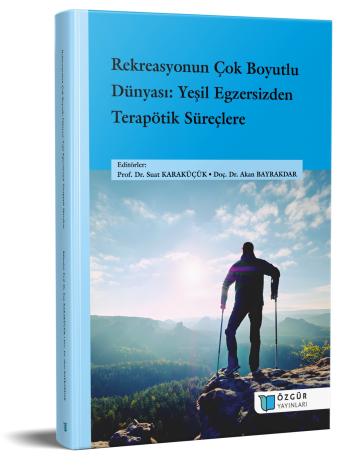
Movement in Harmony with Nature: Green Exercise
Chapter from the book:
Karaküçük,
S.
&
Bayrakdar,
A.
(eds.)
2025.
The Multidimensional World of Recreation: From Green Exercise to Therapeutic Processes.
Synopsis
Green exercise refers to physical activity performed in natural environments, offering integrated benefits for both physiological and psychological health. This chapter explores the theoretical foundations of green exercise, its effects on mood, cognition, and physiology, and its implications for public health. The Attention Restoration Theory, Stress Reduction Model, and Biophilia Hypothesis provide the main frameworks explaining its psychological mechanisms. Evidence from recent research indicates that nature-based physical activity reduces stress, enhances mood, improves attention, and supports cardiometabolic health. Beyond individual wellbeing, green exercise contributes to social cohesion and sustainable public health strategies. Therefore, integrating nature-oriented physical activity programs into urban planning and recreational policies represents a cost-effective and evidence-based approach to promoting population health. Green exercise stands as a promising interdisciplinary concept bridging environmental, physical, and social health dimensions.

